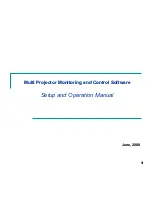
FLASH CS3
User Guide
299
Accessing ID3 properties in mp3 files with Flash Player
Macromedia Flash Player 7 from Adobe and later supports ID3 v2.4 and v2.4 tags. With this version, when you load
an mp3 sound using the ActionScript 2.0
attachSound()
or
loadSound()
method, the ID3 tag properties are
available at the beginning of the sound data stream. The onID3 event executes when the ID3 data is initialized.
Flash Player 6 (6.0.40.0) and later supports mp3 files with ID3 v1.0 and v1.1 tags. With ID3 v1.0 and v1.1 tags, the
properties are available at the end of the data stream. If a sound does not contain an ID3v1 tag, the ID3 properties
are undefined. Users must have Flash Player 6 (6.0.40.0) or later for the ID3 properties to function.
For more information on using the ID3 properties, see
id3
(
Sound.id3
property) in the
ActionScript 2.0 Language
Reference
.
About the ActionScript 2.0 onSoundComplete event
The
onSoundComplete
event of the ActionScript 2.0 Sound object lets you trigger an event in a Flash application
based on completing an attached sound file. The Sound object is a built-in object that lets you control sounds in a
Flash application. For more information, see Sound in the
ActionScript 2.0 Language Reference
. The
onSoundCom-
plete
event of a Sound object is invoked automatically when the attached sound file finishes playing. If the sound
is looped a specified number of times, the event is triggered when the sound finishes looping.
The Sound object has two properties that you can use with the
onSoundComplete
event. The
duration
property is
a read-only property representing the duration, in milliseconds, of the sound sample attached to the sound object.
The
position
property is a read-only property representing the number of milliseconds the sound has been playing
in each loop.
The
onSoundComplete
event lets you manipulate sounds in a many ways, such as the following:
•
Creating a dynamic playlist or sequencer
•
Creating a multimedia presentation that checks for narration completion before advancing to the next frame or scene
•
Building a game that synchronizes sounds to particular events or scenes and transitions smoothly between
different sounds
•
Timing an image change to a sound—for example, changing an image when a sound is halfway through at
playback time
















































